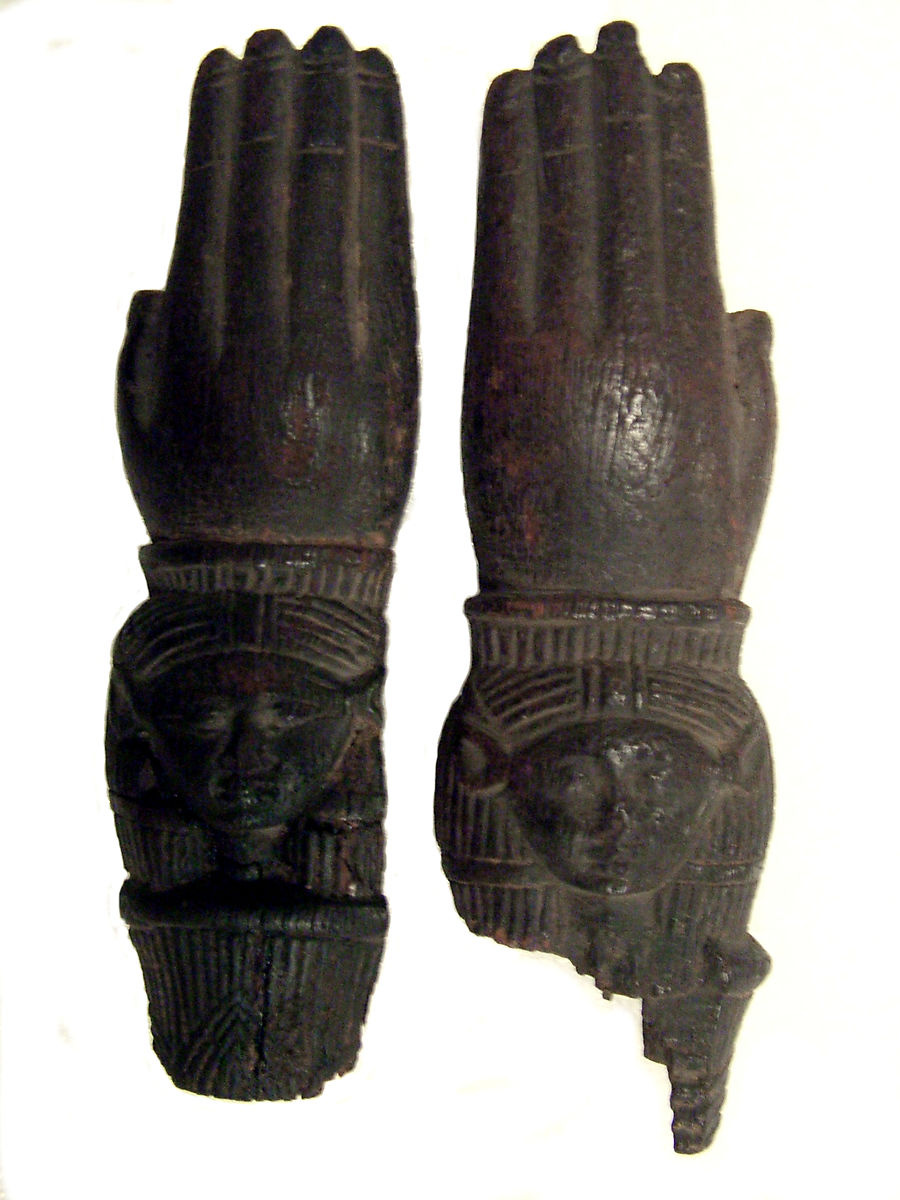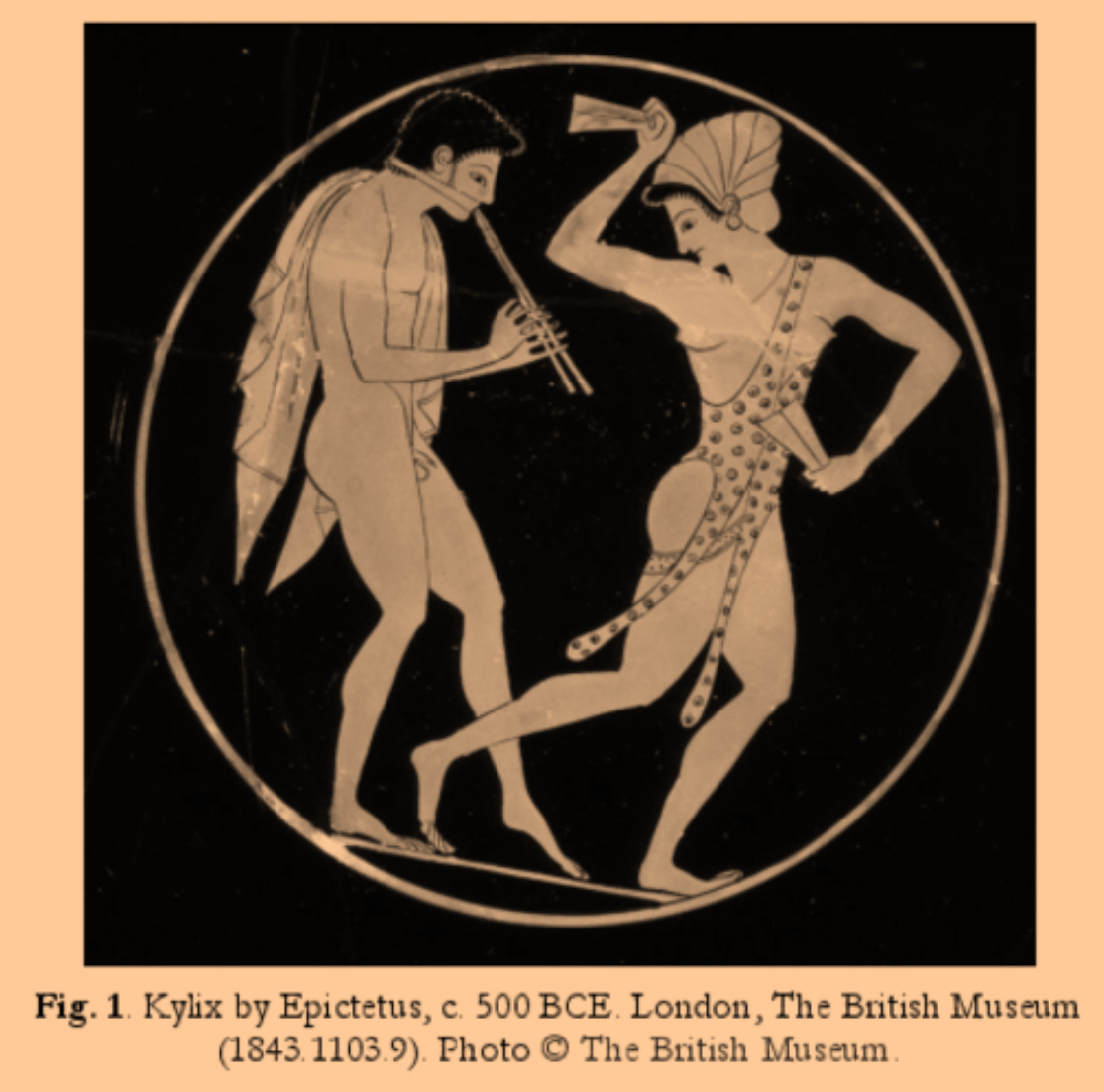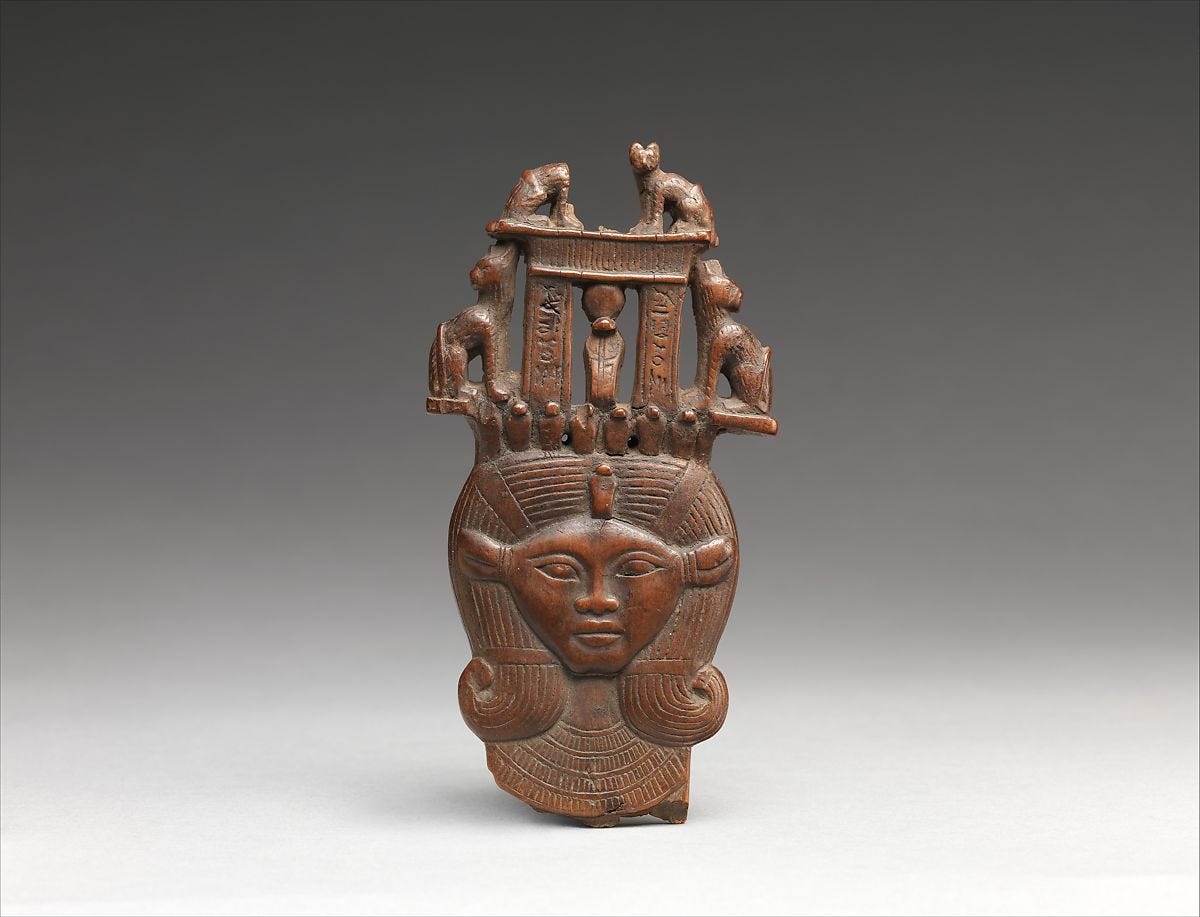I'm using this post as a place to keep weird percussion stuff, most of which tends to have female associations.
Some Sephardi women were renowned as cantaderas, semiprofessional singers who accompanied themselves with tambourines and frame-drums called pandero or panderico in the Eastern Mediterranean or sonaja in North Morocco. In Morocco one also finds among female singers the use of castañetas (called castañuelas or palillos, played rather "unprofessionally" by using only one pair hanging loose from the middle finger and activated by the free hand), an obvious import from Southern Spain. Female performers of percussion instruments in the Balkans and Turkey were called tañaderas. It is interesting to note that the female drummer-singer-dancer in Eastern Mediterranean Hebrew culture as "indicative of a much more extensive and important realm of female activity that would otherwise be acknowledged" goes back to Biblical times, as Meyers (1994) has pointed out on the basis of recent archeological findings. Seroussi
Washboards
So for the week of festivities that surrounded the wedding preparations, the batkhn sang songs in the bride's and groom's homes, accompanied by older women who played percussion using rolling pins on washboards. from Yale Strom (from Weisenberg Hochzeit Judisches…)
That's from the early part of the 20th century in Elizabethgrad, Ukraine. The Ukrainian washboard, or zatula, is slightly different from the American version:
Not sure if the anecdote above was referring to industrial washboards or not, but using a rolling pin on this seems a lot more practical than on a big ol' american washboard. Jewish women didn't invent this form, it is also used in the non-Jewish world, but interesting evidence that, of course, people would use this to provide percussion and of course, those people would be women. Here’s my own attempt to reinject the washboard into klezmer.
Rhythm Bones
These are Egyptian clappers, or rhythm bones, from circa 1800 B.C.E. Aren't they beautiful?
In Greece they are called Crotalum. Also played by women, including high-end prostitutes of the symposia (“Some of them were also trained in dancing (orchstris, lit.“female dancer”), whose rhythm was beaten by percussion instruments like krotala”) and like in Egypt, they were hunting instruments and were useful in making a racket to drive birds out of resting places. Here is a ridiculously detailed article looking at the Greco-Egyptian castanets culture, which even details the going rates for naked castanets dancers.
Clappers, along with drums, were also said that to be used in Egyptian funeral rites. You can find more info in the article linked above.
Here's a medieval depiction of ancient Jewish women (see Miriam) playing music.
Notice the clappers poking out there in a very percussion friendly dance situation. Cute. Important to reinforce that this is not documentary evidence! This is an imaginative recreation of an ancient scene made by medieval people who lived centuries after. They are basing their art on the then current linguistic understandings of ancient words. But still, to make these images, the folks who made them must have had some contact with a tradition of playing bones on some level, no?

The definitions of these Biblical musical terms are seemingly interminably controversial, esp with the bones/clappers. Did such a thing exist amongst the Jews? Insert here a long and boring analysis that ends with educated guesses. I think the bottom line lies in the work of Bathya Bayer who did archaeological work in the region and apparently uncovered many wooden and bone clappers, but I have not seen that book.
We do encounter difficulties in our study of these instruments. 2 Samuel 6:5 is a prime example. Joachim Braun considers “cypress wood” to refer to an instrument itself—to “clappers made of cypress,” since archaeology has revealed clappers: “During the monarchy … cypresses were still plentiful in Israel, and the people probably played clappers made of wood during the great cultic and paracultic festivals” (Music in Ancient Israel/Palestine).
Rhythm bones, when they are made out of actual bones, are specifically made out of rib bones, and the term “rib” was sometimes used as a slang term to refer to women, a reference to Adam’s rib. Another female/bones connection.
Spoons
The bones did not survive past the ancient era, as far as I know, but their wooden versions did, in the form of castanets, also used, virtually exclusively, by women. In Eastern Europe, spoons “took the place of the Spanish and Italian castanets.” Consider the clacking sound on this track. These sounds are made, I think, by dancers, wooden spoons and maybe a woodblock or something? At any rate, the connection between dance and these idiophones is interesting. Wooden spoon playing has been documented as far back as the 18th century in Russia (see page 32 of that link, plus there are woodcuts( as above)).
They are played differently than American spoons, somewhere between bones and spoons, but one can easily find the “American” style as well. The closest thing I can find to them in klezmer is this recording, of Odessa-type music with allusions to klezmer.
The bones and the washboard make very staccato-y triplet-friendly sounds which, to me ears, survive in the woodblock, or as Pete Sokolow says, WOODBLOCK! The woodblock appears mostly on the major key parts of the songs. Perhaps the semiotics of the woodblock refers to this association of major scale, spoons and Gentile/Russian?

On this early recording from Russia, “Memories of Cadiz” (1906), the spoons, (castanets, bones?) are explicitly contextualized as Spanish.
Saul, though, picked up percussion after a long break from music. In Mauthausen, he set up a choir and played the spoons. He says that music saved his life. “When you play music, you forget you are hungry.” - From the Holocaust Survivors Klezmer Band
Sugar “Mary” or Sugar M Vartanian, played Armenian (but with a Jewish violinist) and, according to Carol Freeman, “Although already in her eighties at the time, she did a few performances in New York… and even played spoons for me in one of my concerts.” Here’s an amazing video of her rocking the two handed spoons in her 90s!
Also check out this Greek tune, O Magkas, which overlaps with klezmer, and features what I believe are spoons.
Clapping
Good ol’ clapping. There is an entire dance, the patsch tanz, for this, although people forget that it was a dance specifically, at least on occasion, for women. Vizonsky (1942) refers to a “paatch” tanz for married women only. “This is a dance for married women only. The object being to inaugurate the young bride into their own circle.” (thanks to Tom A. Deakin for the quote).
Notice also how the ancient bones we saw in Egypt were made to look like two hands that would “clap” during performance.

Pictured above is another clapper (I probably should put these in the bones section since “clapper” and “clapping” are different). Interestingly it has an inscription:
“Beloved of Mut, mistress of Isheru,” referring to the owner of the object, probably a priestess in Mut’s temple.
Meaning it was owned by a woman. And here’s a lovely depiction of the scene it might have been used in:
The Isheru at Karnak is Mut’s sacred lake alongside her temple; there the goddess went boating at festivals. Exuberant dance would have taken place at such festivals, and also probably in connection with the Mut temple’s Porch of Drunkenness where a festival of drunkenness was celebrated as part of the Beautiful Festival of the Valley and seen as an occasion of transcendent experience.
Status
An interesting look at the status of the drummer in the context of the feminine:
The drummer has it the worst. Sometimes he doesn’t get a share but instead receives a fixed salary. Yet the drummer’s work in a Jewish orchestra isn’t easy at all. While the violinist leads the wondrous shir,4 the clarinetist strikes the sparks of the most fanciful variations from it, and the trombonist sets them upon the foundation of the bass, the drummer is sweating over such a rattle of acrobatic tattoos and trills that seem to shake the earth and make the feet move by themselves. A weak drummer is a curse of the orchestra, whereas a good one receives blessings not only from the musicians but also from the crowd. It is worth noting, though, that the drummer rarely remains in his position—so ardently eager is he to switch to another instrument and forget his past at the soonest possible moment. And the reason why
he hastens to forget it is because the musicians treat him like a pariah, everyone dominates him and orders him around—from his fellow musicians to the conductor’s wife. The drummer’s kindness has to extend so far that sometimes he kindles the samovar for his conductor and helps the musicians’ wives to carry baskets of food from the market.














